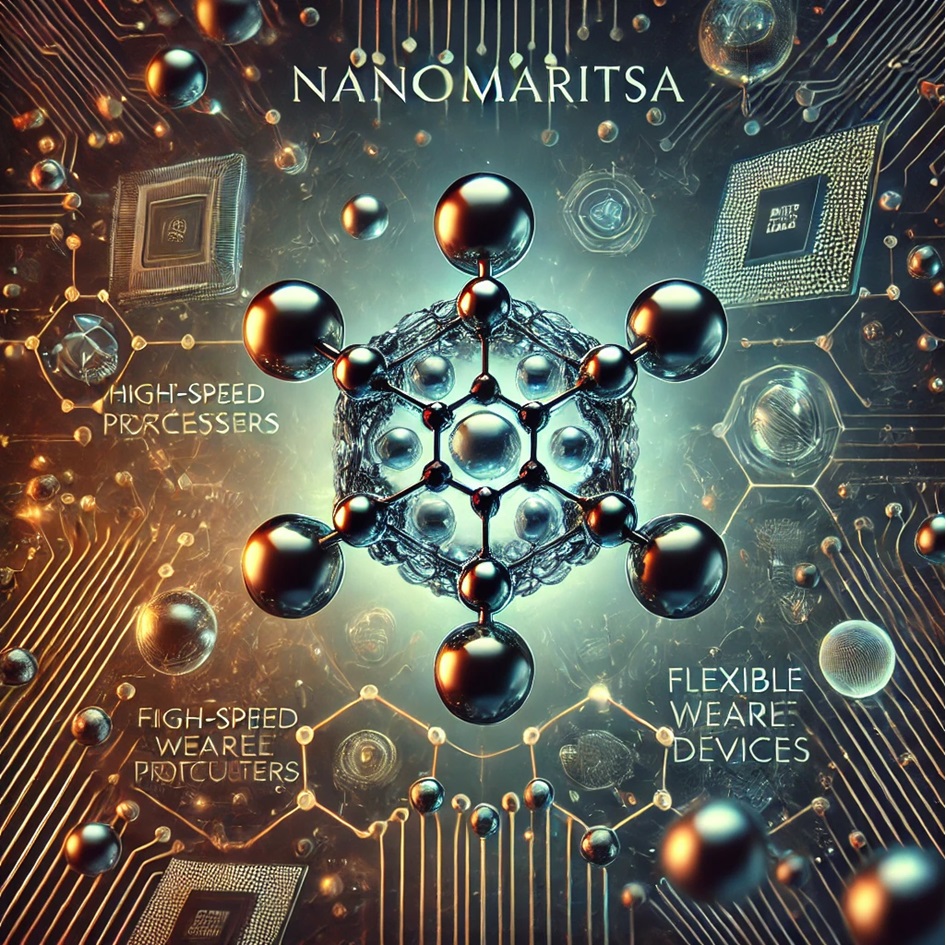Graphene Transistors Unlocking the Future of High-Speed and Energy-Efficient Electronics
Graphene Transistors: Unlocking the Future of High-Speed and Energy-Efficient Electronics
Transistors are the building blocks of modern electronics, and graphene—a single layer of carbon atoms arranged in a hexagonal lattice—is revolutionizing their design and functionality. With unmatched electrical conductivity, high carrier mobility, and mechanical flexibility, graphene transistors promise faster, smaller, and more energy-efficient electronic devices. This blog explores the transformative potential of graphene transistors, their advantages over traditional silicon-based transistors, recent research breakthroughs, and their applications across industries.
Why Graphene? Unique Properties for Transistor Applications
Graphene’s extraordinary properties make it a superior material for transistors:
- High Electrical Conductivity: Allows rapid electron transport, enabling ultra-fast switching.
- High Carrier Mobility: Facilitates the movement of charge carriers at unprecedented speeds.
- Thinness and Flexibility: Enables the development of compact and flexible electronic devices.
- Thermal Conductivity: Prevents overheating in high-performance devices.
- Transparency: Suitable for applications in optoelectronics and transparent electronics.
Advantages of Graphene Transistors Over Silicon Transistors
- Speed: Graphene’s carrier mobility is significantly higher than silicon’s, making graphene transistors ideal for high-speed processing tasks.
- Energy Efficiency: Reduced energy dissipation in graphene transistors extends battery life and reduces power consumption.
- Miniaturization: Graphene’s thinness enables the creation of smaller transistors, paving the way for more compact electronic devices.
- Durability and Flexibility: Graphene transistors maintain performance under mechanical stress, making them ideal for flexible and wearable electronics.
Applications of Graphene Transistors
- High-Speed Computing
Graphene transistors are driving advancements in computing by enabling faster data processing:
- Quantum Computing: Graphene’s quantum properties make it a promising material for qubits and quantum gates.
- Advanced CPUs and GPUs: High-speed transistors enhance the performance of processors for AI and big data applications.
- Consumer Electronics
From smartphones to smart TVs, graphene transistors are reshaping consumer technology:
- Faster Smartphones: Enables seamless multitasking and faster app performance.
- Transparent Displays: Graphene transistors power lightweight and flexible touchscreens.
- Internet of Things (IoT)
Graphene transistors are ideal for IoT devices due to their energy efficiency and compact size:
- Smart Sensors: High sensitivity and low power requirements make graphene transistors suitable for IoT sensors in smart homes and cities.
- Wearables: Enhances the functionality and battery life of fitness trackers and health monitors.
- Renewable Energy Systems
Graphene transistors improve the efficiency and performance of renewable energy technologies:
- Solar Panels: Enhances the conversion efficiency of photovoltaic cells.
- Energy Storage: Facilitates advanced battery management systems.
- Optoelectronics
Graphene’s transparency and electrical properties make it a game-changer in optoelectronics:
- Photodetectors: Ultra-fast and sensitive graphene-based photodetectors improve imaging and optical communication.
- Light-Emitting Devices: Graphene transistors are used in flexible OLED displays and lighting.
Recent Research and Innovations
- Graphene Field-Effect Transistors (GFETs): GFETs demonstrate superior speed and efficiency in applications ranging from sensing to communication.
- Flexible Transistors: Research in Nature Electronics highlights graphene’s potential in developing foldable and stretchable electronics.
- 3D Graphene Structures: Advances in 3D printing graphene transistors enable complex geometries for specialized applications.
- Hybrid Materials: Combining graphene with other nanomaterials, such as molybdenum disulfide (MoS₂), further enhances transistor performance.
Challenges in Graphene Transistor Development
Despite its potential, there are hurdles to overcome:
- Bandgap Absence: Graphene’s lack of a natural bandgap limits its use in digital logic circuits. Research into creating an artificial bandgap is ongoing.
- Scalability: Manufacturing high-quality graphene at scale remains a challenge.
- Integration: Adapting existing semiconductor manufacturing processes to accommodate graphene technology.
Future Prospects
Graphene transistors hold immense promise for the future of electronics. As research addresses current limitations, potential developments include:
- Low-Power Electronics: Revolutionizing portable devices by minimizing energy consumption.
- Advanced AI Hardware: Enabling faster and more efficient neural network computations.
- Flexible and Transparent Electronics: Transforming the design of wearable tech and smart displays.
Conclusion
Graphene transistors represent a significant leap forward in electronic technology, offering unparalleled speed, efficiency, and versatility. From powering next-generation computing to enabling smarter, more sustainable devices, graphene transistors are poised to redefine the landscape of modern electronics. As research and innovation continue, graphene will undoubtedly cement its place as a cornerstone material in the evolution of high-performance electronics.


